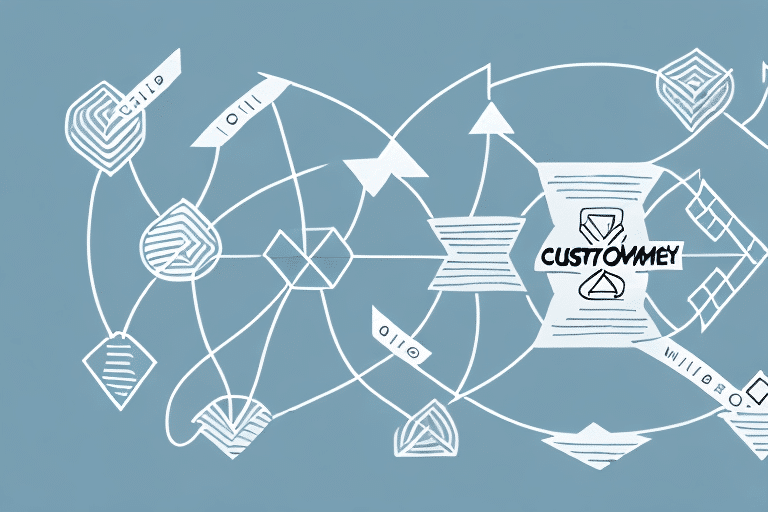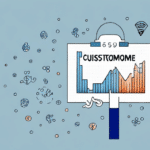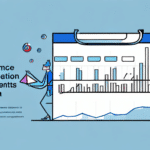Overcoming the Challenges of Customer Retention
Customer retention is essential to the success of any business, regardless of industry or size. It involves keeping current customers satisfied and loyal over an extended period, ensuring they return for repeat business, and influencing them to promote your brand to others. In today’s highly competitive marketplace, customer retention is more challenging than ever before. In this article, we’ll examine the challenges of customer retention and provide practical strategies to overcome them.
Importance of Customer Retention
Acquiring new customers is an expensive and exhaustive process, requiring resources such as time and money. In contrast, retaining existing customers is more cost-effective and results in a higher lifetime value. Loyal customers tend to purchase more, refer others, and have a lower churn rate, resulting in increased revenue and profits. Additionally, loyal customers are more likely to provide valuable feedback, enabling you to improve your products or services and enhance the customer experience.
Moreover, customer retention is crucial for building a strong brand reputation. Satisfied customers are more likely to leave positive reviews and recommend your business to others, which can lead to increased brand awareness and credibility. On the other hand, dissatisfied customers can damage your reputation by leaving negative reviews and discouraging others from doing business with you. Therefore, investing in customer retention strategies not only benefits your bottom line but also helps to establish a positive brand image.
Understanding Customer Churn
Common Reasons for Customer Churn
Before addressing the challenges of customer retention, it’s essential to understand why customers leave. Churn can occur for various reasons, such as:
- Poor customer service: Customers expect to be treated with respect and receive timely and effective solutions to their problems.
- Inadequate communication: Lack of regular and meaningful interaction can make customers feel neglected.
- Product quality issues: Subpar products or services can drive customers to seek better alternatives.
- Competitive offers: Attractive promotions or better pricing from competitors can lure customers away.
Identifying the reasons for churn and addressing them is an essential step in preventing customers from leaving in the future.
Impact of Poor Customer Service
One of the most common reasons for customer churn is poor customer service. When customer service is lacking, customers may feel undervalued and seek out competitors who can provide better support. It's crucial for businesses to invest in training their customer service representatives and implementing processes to ensure that customers receive the best possible experience.
Strategies to Improve Customer Retention
There are various strategies businesses can implement to improve customer retention rates, such as:
- Offering Exceptional Customer Service: Providing excellent customer service is essential to retaining customers. This includes being responsive, helpful, and timely with your support and service.
- Providing Personalized Experiences: Customers appreciate personalized experiences, such as customized products or services, personalized communication, and relevant content.
- Using Data and Analytics: Analyzing customer data, such as purchasing behavior and preferences, can provide insights into what customers want and need, enabling you to improve their experience and retention.
- Building Loyalty Programs: Rewarding customers for their loyalty, such as with points or exclusive access to products or services, can increase retention rates.
Implementing Loyalty Programs
Loyalty programs incentivize repeat business by offering rewards for continued patronage. According to a study by Bain & Company, increasing customer retention rates by 5% increases profits by 25% to 95% (Bain & Company).
Enhancing Customer Experience
Streamlining the Buying Process
Improving the customer experience is key to retaining customers. Businesses should focus on providing easy-to-use websites, apps, and interfaces, as well as making the buying process simple and straightforward.
Personalizing Interactions
By collecting data on customer preferences and behavior, businesses can tailor their offerings and communications to better meet their needs. This includes personalized product recommendations, targeted marketing campaigns, and customized customer service interactions.
Soliciting and Acting on Feedback
Regularly surveying customers and implementing changes based on their suggestions demonstrates that you value their opinions and are committed to providing the best possible experience. This can help identify areas for improvement that may not have been previously considered.
Personalizing Communication to Increase Retention
Personalized communication can help retain customers by showing them that they are valued. Businesses can use various channels, such as email, social media, and chatbots, to tailor communication to individual customers. Personalization can include messaging that acknowledges past purchases, recommends relevant products or services, or provides educational content.
One effective way to personalize communication is by using customer data to create targeted marketing campaigns. For example, a clothing retailer could send a personalized email to a customer who frequently purchases dresses, featuring new dress arrivals or a discount on dresses. This type of targeted communication can increase the likelihood of a customer making a purchase and ultimately lead to higher retention rates.
Leveraging Data and Analytics
Data and analytics provide valuable insights into customer behavior and can help companies understand and address challenges. Businesses can use data to analyze customer feedback, track purchasing patterns, and identify customer needs. By implementing data-driven decisions, businesses can anticipate customer needs and stay ahead of the competition.
One of the key benefits of using data and analytics to enhance customer retention is the ability to personalize the customer experience. By analyzing customer data, businesses can gain a better understanding of individual preferences and tailor their offerings accordingly, leading to increased customer satisfaction and loyalty.
Additionally, data can help identify potential issues before they become major problems. By monitoring customer feedback and behavior, businesses can quickly identify areas where improvements are needed and take action to address them, preventing customer churn.
Best Practices for Engaging Customers and Building Loyalty
- Providing Exceptional Customer Service: Respond to reviews and complaints, offer solutions, and make yourself available to customers.
- Data-Driven Decision Making: Leverage data and analytics to make informed decisions about pricing, promotions, and marketing campaigns.
- Offering Loyalty Programs: Implement rewards and points systems to motivate and incentivize customers.
- Investing in Social Media: Develop a strong social media presence by providing relevant content and interacting with customers.
Additionally, personalization and exceptional after-sales support are crucial. Tailoring the customer experience through targeted marketing campaigns, personalized product recommendations, and customized communication makes customers feel valued and appreciated.
Offering exceptional after-sales support, such as easy access to support channels and responsive, knowledgeable staff, helps build trust and loyalty with your customers.
Avoiding Common Mistakes in Customer Retention
Several common mistakes can hurt customer retention, such as:
- Lack of Communication: Failing to maintain regular and meaningful interactions with customers.
- Poor Customer Service: Not addressing customer issues promptly and effectively.
- Low-Quality Products or Services: Offering subpar products that do not meet customer expectations.
- Ineffective Pricing and Promotions: Not aligning pricing strategies with customer expectations and market trends.
- Neglecting Brand Reputation: Ignoring the importance of online reviews and public perception.
Addressing these challenges requires understanding the root causes and committing to continuous improvement.
Measuring Customer Retention Success
Measuring the success of customer retention efforts is critical to improving retention rates. Businesses should track key metrics such as:
- Customer Acquisition Cost (CAC): The cost associated with acquiring a new customer.
- Churn Rate: The percentage of customers who stop using your product or service over a given period.
- Customer Lifetime Value (CLV): The total revenue expected from a customer over the entire duration of their relationship with your business.
- Net Promoter Score (NPS): A measure of customer satisfaction and loyalty based on their likelihood to recommend your business.
Additionally, companies should analyze customer feedback, monitor customer service interactions, and assess engagement levels to identify areas that require improvement. By regularly measuring and analyzing retention efforts, businesses can stay ahead of the competition and identify opportunities for growth.
The Role of Social Media in Customer Retention
Social media provides an opportunity for businesses to connect with customers and build loyalty. Companies can use social media to:
- Interact with Customers: Respond to comments, messages, and reviews to foster a community feeling.
- Provide Valuable Content: Share relevant and engaging content that resonates with your audience.
- Offer Promotions and Discounts: Use social media platforms to announce special offers and exclusive deals.
- Build Brand Awareness: Increase visibility and credibility through consistent and strategic social media activities.
By investing in social media, companies can promote customer retention and strengthen relationships with existing customers.
Building a Culture of Customer Service
Creating a culture of customer service requires a company-wide commitment to providing excellent service to customers. Key elements include:
- Employee Training: Invest in training programs to ensure that employees understand the importance of customer service and are equipped to deliver it.
- Empowering Employees: Allow employees to make decisions that enhance the customer experience without unnecessary approvals.
- Supportive Environment: Foster a workplace culture that prioritizes customer satisfaction and encourages employees to go above and beyond.
- Emphasizing Customer Satisfaction: Make customer satisfaction a top priority in all business operations and decisions.
By prioritizing customer service, companies can build a loyal customer base and improve retention rates.
Building Trust with Customers
Building trust with customers requires transparency, honesty, and integrity. Businesses should:
- Maintain Open Communication: Keep customers informed about product updates, company policies, and any changes that may affect them.
- Respect Customer Privacy: Take steps to protect customer data and ensure privacy, especially with increasing concerns about data breaches.
- Deliver Quality Consistently: Ensure that products and services consistently meet or exceed customer expectations.
- Address Issues Promptly: Handle customer complaints and issues quickly and effectively to maintain trust.
By providing quality products and services and addressing customer needs promptly, companies can build trust and loyalty. Additionally, protecting customer data and privacy further enhances trust in the company.
Implementing Referral Programs
A referral program is an effective way to drive repeat business and promote customer retention. Companies can:
- Offer Incentives: Provide discounts, rewards, or exclusive access to products or services for customers who refer new clients.
- Create a Positive Feedback Loop: Satisfied customers refer others, expanding your customer base organically.
- Gain Valuable Insights: Referral programs can provide insights into customer satisfaction and areas for improvement.
Referral programs not only help in acquiring new customers but also strengthen the loyalty of existing ones by rewarding them for their advocacy.
Future Trends in Customer Retention
The future of customer retention is shaped by evolving trends and technological advancements. Key trends include:
- Increased Personalization: As technology continues to improve, companies will be able to tailor products, services, and communication to individual preferences more accurately.
- Improved Automation: Automation tools will enhance efficiency and provide deeper insights into customer behavior and needs.
- Greater Emphasis on Data Privacy and Security: With the rise of data breaches, companies will prioritize enhanced privacy and security measures to protect customer information.
- Enhanced Customer Engagement: Interactive and immersive technologies, such as augmented reality (AR) and virtual reality (VR), will offer new ways to engage customers.
Staying abreast of these trends will help businesses adapt their retention strategies to meet changing customer expectations and technological landscapes.
Conclusion
Customer retention is critical to the success of any business. While challenges exist, companies can overcome them by employing various strategies, such as providing exceptional customer service, personalized communication, and data-driven decision-making. Building trust, creating a culture of customer service, and implementing referral programs are also effective ways to drive retention rates. As businesses continue to adapt to the changing landscape, staying ahead of the competition requires a commitment to meeting and exceeding customer expectations.




















